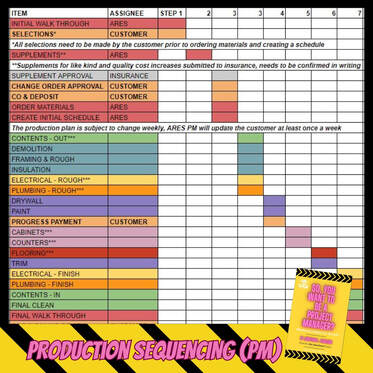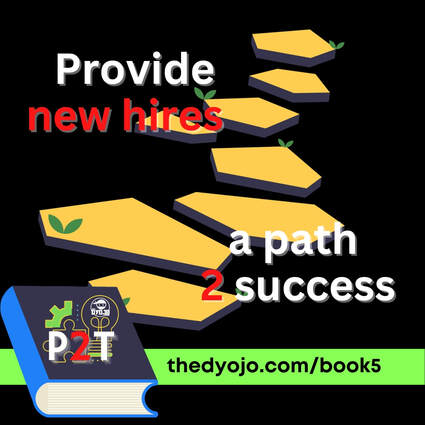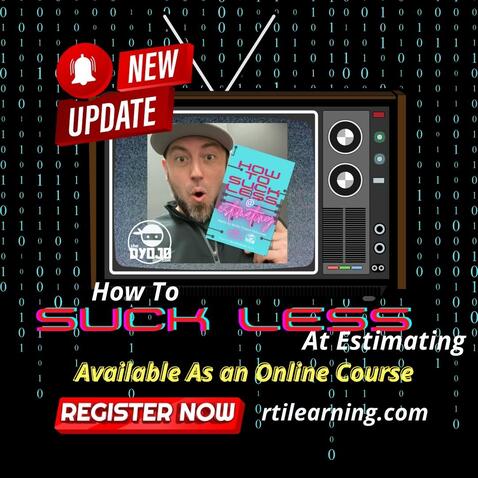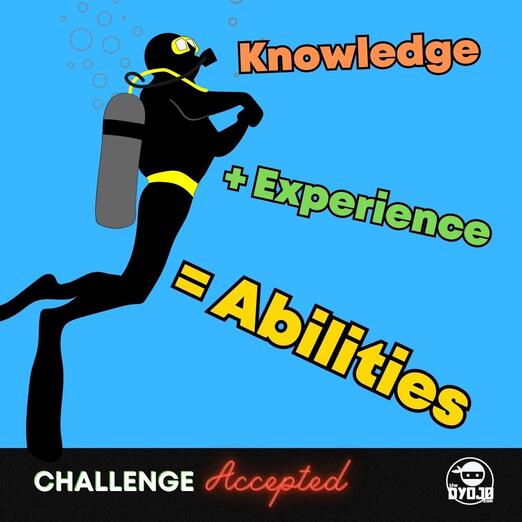|
Jon Isaacson had the honor of being selected to present The 3 P's of Project Management for multiple construction tradeshows this year. Friday, February 2, 2024 Pete Consigli's Winter Break 2024 (Naples, Florida) Jon Isaacson is Speaking on The 3 P's of Project Management for Construction Professionals Thursday, February 29, 2024 11:15 AM – 11:45 AM National Association of Home Builders (NAHB) International Builders Show (Vegas, Nevada) Jon Isaacson is Speaking on The 3 P's of Project Management for Construction Professionals Wednesday, April 10, 2024 10:45 AM to 11:30 AM CT Restoration Industry Association (RIA) Annual Conference and EXPO (Dallas, Texas) Jon Isaacson is Speaking on The 3 P's of Project Management for Restoration Professionals During these presentations, Jon shares from his over twenty years of experience in the skilled trades. He also shares principles from his third book, So, You Want to be a Project Manager? The 3 P's presentation reviews the traditional metrics of project management which require an organization to bring projects to completion ON scope, ON budget, and ON schedule. As the discussion progresses, Jon helps owners, managers, and construction professionals better prepare for consistent outcomes with the dynamics of project management. In addition to those core competencies, modern professionals have to always be learning to improve their skills with People, Process, and Projects (The 3 P's). The two resources that attendees most ask for after the attend the 3 P's of Project Management presentations are The DYOJO Production Sequencing and Project Tracking spreadsheets (see images above). If the reader is interested in these resources they should check out Jon's books, So, You Want to be a Project Manager (production sequencing) and How to Suck Less at Estimating (project tracking). How to Suck Less at Estimating is also a six module course available through Restoration Technical Institute. Contact The DYOJO today to discuss these resources.
0 Comments
The job interview. If your interview habits are not helping your business achieve the goals of attracting, hiring, and retaining good talent, it's time to review the process. This text is from an excerpt from Episode 113 of The DYOJO Podcast. This blog discussion will benefit business owners, managers, parents, and educators as they look to understand and engage with young professionals. As our friend and fellow author, Tony Canas said in Episode 112, "You've got to show them [emerging professionals] a path to success." This content will also be a benefit to those aspiring professionals that maybe stumbled across this wonderful podcast to learn some tips on what current and future employers are looking for. Young professionals will receive valuable tips for
Emerging professionals don't just want a job, they want to find a place where they can grow and thrive. Our discussion extends to how new employees can set themselves up for those critical first 30, 60, and 90 days in a new job. Understanding how to achieve goals once a job has been acquired. New Book for Young ProfessionalsFor those of you reading, who are actually preparing for an interview, we will help you Prepare 2 Thrive. For those business owners, managers, parents, educators, you will want to share this information with young professionals preparing for interviews. What we discuss in this blog and the accompanying video will help job seekers stand out and thrive in a job interview. You'll recognize some of these tips from my latest book, P2T: Preparing 2 Thrive in the Modern Workplace. This book provides new hires with a path to success. This is resources for young pros book one. Tips for Thriving in a Job InterviewHere are the tips for thriving in a job interview that we share in P2T: Preparing 2 Thrive in the Modern Workplace
Read about these tips and many more in P2T: Preparing 2 Thrive in the Modern Workplace by Jon Isaacson. P2T: Chapter FiveThis blog and the accompanying video share Chapter Five: The Job Desription from my new book P2T: Preparing 2 Thrive in the Modern Workplace.
When a company writes a job description, they are giving applicants clues about what they are looking for. You shouldn’t have to dig too deep into the job description to find a few things that you understand and relate to the knowledge, experience, and abilities you have demonstrated in your life (see Chapter 12 for more on these Four Elements). What is the title of the position? If the title is something like entry-level customer service representative, what does this tell you? Entry-level usually means that they are hiring someone with little to no prior experience. Customer service can mean many things, but it usually requires the employees to interact directly with the public. Read what the listing says about a few key elements. Qualifications. This is where they tell you what prior knowledge, experience, and/or abilities they expect applicants to have. Roles and/or responsibilities. This is where they try to paint a picture of what applicants will be doing if they get hired. Compensation. Some organizations will tell you what the salary or hourly wage range is, and others will not. You will want to try to determine if the qualifications are required or recommended. For example, the employer may prefer that you have an Associates Degree (AA/AS) but they don’t require it. Even if they say they require a degree, you may roll the dice and apply anyway. What experiences do you have that are relevant to the roles and responsibilities outlined in the job description? If you have demonstrated knowledge, experience, or abilities that could be worth more than a degree, you will want to use the cover letter to communicate this. If they don’t specify the compensation, this is a question you can ask in the interview. Asking, “How much does this job pay,” is a reasonable question. Instead, try asking it another way. For example, “Is the compensation rate at or above minimum wage?” Sounds a little more intelligent. Then you can follow up with, “What is the process and timeline for becoming eligible for a promotion.” This approach communicates that you understand that if you work hard you will earn more. Some jobs have a review after 90 days. Others may provide training or certification that opens up more pathways to greater responsibilities and higher pay. Be proud of the fact that you want to thrive. You should leave the interview with a sense of clarity about what your options for advancement are. P2T: Preparing 2 Thrive in the Modern Workplace, the new book by Jon Isaacson. LEARN MORE about P2T or BUY NOW from Amazon. My new book will help business owners better engage young professionals and help them articulate a pathway to success. Organizations need to show the incoming workforce a path to success. This is a win-win for employers and employees. In the professional world, we can see an organization doing well and be tempted to think they have an unfair advantage. In the arena of sports, we hear about performance enhancing drugs and teams trying to steal other secret signs. In business, we hear about corporate espionage and insider trading. These all appear to be unfair business advantages. Good news for business owners, managers, and supervisors. There are ethical and legal ways to create "unfair" advantages in the workplace. Where your peers and competitors are struggling and complaining about working with young professionals, there is a NEW BOOK from The DYOJO that will create win wins for employers and employees.
Check out P2T: Preparing 2 Thrive in the Modern Workplace by Jonathan L. Isaacson. This is the first book in the Resources For Young Professionals series. Join the early release mailing list to get your "unfair" advantage TODAY. Our deep thoughts for construction estimators are brought to us this week by Norman Foster in his book, first published in 1961, Construction Estimates from Take-off to Bid. In this helpful book, Mr. Foster reminds contractors that, “A good estimate is built around a good set of quantities and a proper feeling for cost, rather than being a by-product of statistics.” This is the nexus between the art and the science of construction estimating. If you want better outcomes from your construction estimates, focus on “a good set of quantities” This aligns with what we have termed “Thorough Data Capture” or TDC and “a proper feeling for cost” which mirrors what we have termed “Accurate Data Input” or ADI. Stick around as we discuss a simple formula for better construction estimates. Contractor Career Growth TipsBefore we dive into this week’s delicious topic, let’s recap our conversation from the last episode. In addition to sharing the record-breaking results from contractors throughout the United States and Canada for the fourth annual SOCKTember charitable event. We had some excellent input from contractors who are investing in the future of the skilled trades. I want to make sure no one missed the truth bombs Nicole Humber, CEO of Bravo Restoration in Windsor, California shared. Learning from Restoration HistoryThe topic for today's episode is a simple formula for better construction estimates. As I am preparing for a course that I will be teaching at the beginning of 2024, I’ve been researching various authors, approaches, and case studies related to estimating. I’m a sucker for old books. I love to find older books on current topics so that I can compare and contrast the best practices from our history. March 2007 Founding Fathers Article in C&R Magazine from Pete Consigli History often demonstrates that there is nothing new under the sun. The problems are similar and the solutions are often much simpler than we want to believe them to be. Gaining ground is less a battle for new knowledge than it is the discipline to execute on what you know. This should not dismiss the importance of adaptation. Rather, our job is to understand the principles, and break them into processes that our teams can execute, and for most people in a position of leadership this means making the concepts as clear and simple as possible. Our good friend and industry legend, Cliff Zlotnik, quoting Albert Einstein says, “If you can’t explain it to a four-year-old, you don’t understand it.” You may notice that phrase, clarity, consistency, and accountability, or the Three C’s, as we use it often in The DYOJO. Another way of saying this is, what Bebo Crain shared in Episode 108, “The simpler the better,” and then he qualified, “Or, the more understood, the better.” Because, as he shared, “As contractors we are held accountable for what we can document, not just what we did.” There may be technologies that help us to be more efficient and effective, but if we do not have a base knowledge of how to compose an estimate without software, we are going to have issues. This translates to all parts of the business. When we become over reliant on a process or a resource, we lose sight of the foundational elements of the industry and struggle to dissect reasonable fixes for basic issues. Basic issues that continue to plague many organizations. Estimating is just one of these areas that demonstrates this dissonance between what an organization says it wants to accomplish and its day-to-day habits. Estimates are Communication PlatformsA project always consists of at least three elements:
The duration and the cost are directly related to the scope. Most people want to focus on the cost, but scope is the most important to clarify among all parties first. By contrast, what happens in a typical change order transaction between a TV-based remodeling personality and their chosen contractor? POINT #1 - All estimating platforms are communication platforms. In the insurance world, an Xacimate estimate is room-by-room, line-by-line. It’s not a format many contractors or customers are familiar with. But who is familiar with the format? Insurance companies. Who has the money? Insurance companies. So, if they have the money and you want to work with them, perhaps it is helpful to think of Xactimate as a communication platform more than it is an estimating platform. Xactimate estimates are built with a diagram/sketch, there are many helpful means of creating and communicating scope using the sketching tool. Xactimate estimates allow you to forward photos that are labeled in correlation to the rooms and scopes that they refer to. A labeled photo helps to prevent many unnecessary headaches. For example, a photo labeled “Kitchen cabinet base section one face damage, replace box” is much more helpful than “IMG 1008” or “cabinet was broken”. If you are an owner or manager listening to this episode, these are things you have to train. What does it mean to label a photo? It doesn’t happen without intention and training. Before you resort, as many do, to simply blaming the estimating tool. Stop and think about your processes. Does your team regularly create an estimate that the insurance company, the entity with the money, the customer, the entity with the contract signing pen, and the production team, the ones who have to complete the work, all understand? An estimate communicates to the money, the signier, and the worker, what is and what is not part of the project. If one, or all of those parties don’t understand the scope, you need to fix your communication platform. If one, or all of those parties don't understand the scope, you need to fix your estimating process. All Estimates are Data DrivenPOINT # 2 - All estimates are DATA driven If you don’t understand the scope, you won’t be able to price the estimate correctly. Potential solutions for getting better scope details to the estimator:
What is the common thread? DATA. Having the right people capture the data and the right people enter the data for your approach. When we consult with or write remote estimates for a client, we always ask them to complete a minimum level of documentation. This HAS to be a dimensional scope, as accurate as possible, and scope details. For those who are new or have limited knowledge, a video is one of the best ways to ensure the estimator is writing what the person scoping the project wants to achieve. In insurance work, photos are a must. This is Commandment Number 2 from my first book. But if the estimator, the adjuster, or the client has no idea where the photo came from - ie room and what the photo is telling them, it’s useless. Labeled photos are key. IMPROVING ESTIMATING OUTCOMES:
In Episode 111 of The DYOJO Podcast:
Credits The DYOJO Podcast is produced by The DYOJO (D-Y-O-J-O). Host Jon Isaacson, the Intentional Restorer, is an author and contractor based in Puyallup Washington. You can find out more about this podcast, including blog posts with content references, as well as Jon’s books for contractors and other services at thedyojo.com. If you have enjoyed this content, please like, subscribe, and share. Business owners and managers, are you looking for a book that you can hand to new hires and confidently say, “THIS will help you understand how to be a value in our company and help you chart a path for success.” Look no further! Challenge Accepted: Mindset and Habits for Thriving in the Workplace by Jon Isaacson COMING SOON Challenge Accepted is a resource you can hand to young people as they build a life for themselves. You can be confident that this publication is an additional voice echoing your many encouragements. Learn more about this project and how you can reserve a copy - thedyojo.com/book5 Announcing a new book from author Jon Isaacson. Challenge Accepted: Mindset and Habits for Thriving in the Modern Workplace.
For business owners and managers, this latest book will be something you can hand to a young professional. Whether they're applying for a job or starting with your company. You can confidently say, "This book provides a roadmap for you to prepare your mindset and your habits. Not only to succeed in our organization, but in life." Challenge Accepted. This book outlines many of the key things every business owner and manager wants young professionals to know. Readers will receive an asset to help them thrive as they build their professional skills. This is an excerpt from Chapter 1.2 of my upcoming book, Challenge Accepted: Mindsets and Habits for Thriving in the Workplace. In this chapter I discuss four elements of career development for those entering the workforce as well as those looking to grow their roles and responsibilities. Chapter 1.2 Four ElementsWe are talking about Getting Ready so that you can Get Started on your professional journey. Whenever you face an opportunity to elevate your role or increase your responsibilities, you will revisit the Three Wheres. These are 1) Where you are, 2) Where you will be, and 3) Where you want to be. Within each of these stages, there are Four Elements that enable you to develop yourself (aka personal development, see more in Chapter 2.4) and your professional skills.
As we work to increase these four elements, something changes within us. The inner change is what prepares us to receive and thrive in new opportunities for external growth. External growth is reflected in achieving our goals. Internal growth is all of the preparation work that we do to get our mindset and habits right to face new challenges in our lives. Increase knowledge = Increased perspective of what is possible.
Increase experiences = Increase confidence in the ability to learn new things.
Increase abilities = Increase opportunities through stewardship of knowledge and experiences
Increase resources = Increase access to opportunities
Knowledge is the most accessible of the four elements. If you are asking, “Where CAN I acquire new knowledge?” I would ask you to consider the same question with one small twist, “Where CAN’T you acquire new knowledge?” You have unlimited access to information which is an essential building block of knowledge. New knowledge has the power to expand our prior concepts of how things work and what is possible. Knowledge elevates our mindset and perspectives. For example, if you wanted to learn to be an electrician, where could you find information about this trade?
Take anything you want to learn and ask the same question, “Where CAN’T you find information and acquire new knowledge?” We will discuss all four of these elements, but to understand knowledge we have to think about how people deliver and receive new information. For more about this book for yourself or a young professional that you want to encourage, check out the Challenge Accepted landing page and RSVP your copy today.
|
Words
The DYOJO - helping contractors shorten Archives
June 2024
Categories
All
EstimatingMarketingInsurance ClaimsLeadership |
|
| |||||||








 RSS Feed
RSS Feed
